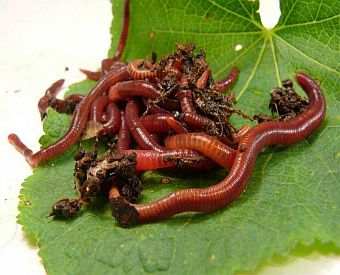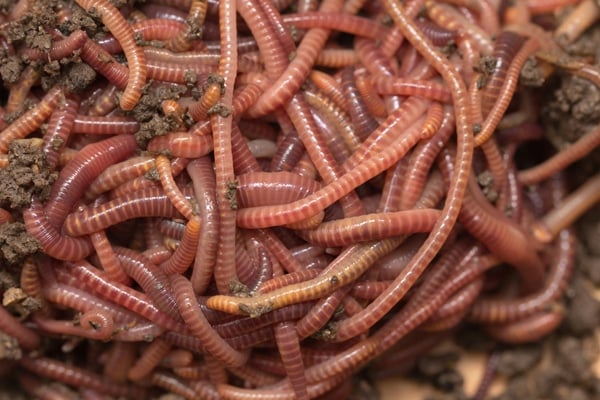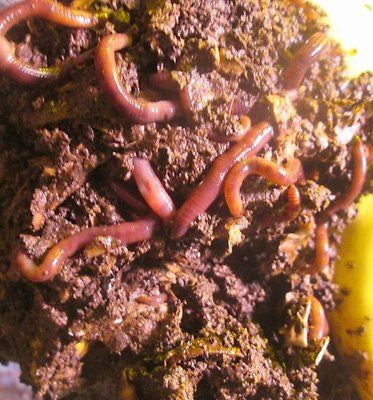Healthy red wigglers: Top choices for your composting needs
Healthy red wigglers: Top choices for your composting needs
Blog Article
Transform Your Garden With Red Wigglers: Advice
Red wigglers are not just a curiosity for compost fanatics; they are crucial representatives of improvement for any type of garden. By developing a fundamental worm container and comprehending the dietary needs of these amazing animals, gardeners can considerably boost dirt quality and plant wellness. The procedure of converting natural waste into abundant, fertile spreadings is both simple and rewarding. The real potential of red wigglers goes beyond plain composting. Checking out the nuances of their treatment and the varied applications of their by-products can open even higher benefits for your gardening endeavors.

Benefits of Red Wigglers
Red wigglers, medically recognized as Eisenia fetida, are usually hailed as nature's composting champions. These remarkable worms offer numerous vital advantages that can considerably improve yard health and wellness and efficiency.

An additional noteworthy advantage of red wigglers is their ability to decrease waste. By composting natural materials that would or else add to garbage dump waste, they play a vital duty in sustainable gardening techniques. Lastly, integrating these worms right into your horticulture routine can lead to boosted returns, healthier plants, and a more dynamic garden setting, making them vital allies for garden enthusiasts looking for to improve their ecological impact.
Establishing a Worm Container
Producing a worm bin is an essential action for anyone looking to harness the advantages of red wigglers in their gardening initiatives. A suitable worm container can be made from various products, consisting of plastic containers, wooden dog crates, or commercially available worm containers. The initial consideration is dimension; a container that is at the very least 2 feet wide, 3 feet long, and 1 foot deep is typically excellent for a little to tool variety of worms.
Next, make certain appropriate water drainage and ventilation. Pierce openings in all-time low for excess wetness to leave and in the sides for air movement. It is very important to develop a bedding layer, making use of materials such as shredded paper, cardboard, or coconut coir to give a comfortable atmosphere for the worms. The bed linen should be damp but not soaked, resembling a moist sponge.
Place the bin in a place that preserves a regular temperature, ideally between 55 ° F and 77 ° F. Avoid direct sunlight or extreme cold, as these conditions can damage the worms. Once the bin is set up, enable the bed linen to choose a couple of days prior to presenting the red wigglers, guaranteeing they have a successful environment in which to thrive.
Feeding Your Red Wigglers
As soon as the worm container is developed and the red wigglers are introduced, appropriate feeding ends up being key to preserving a healthy worm population. Red wigglers flourish on a varied diet plan, mainly being composed of kitchen area scraps and organic materials. Perfect foods consist of vegetable peels, fruit scraps, coffee premises, and crushed eggshells. It is vital to prevent feeding them meat, dairy, or oily foods, as these can produce unpleasant odors and attract insects.
When introducing food, slice the scraps into smaller sized pieces to promote quicker usage. Additionally, hide the food underneath a layer of bed linens material to stop fruit flies and other annoyances. Monitor the feeding regularity; a basic guideline is to offer my site food every 1-2 weeks, depending on the variety of worms and the amount of food waste produced.

Gathering Worm Castings
Exactly how can you tell when it's time to gather worm spreadings from your container? The readiness of worm spreadings is shown by a couple of vital indicators. The product in the container need to show up dark, crumbly, and abundant in structure, looking like a great dirt. Additionally, the original food scraps need to be dramatically broken down or nearly unrecognizable, showing that the worms have actually successfully processed them.
One more indication is the decrease in worm task; as the spreadings build up, worms tend to move in the direction of fresher food resources. If you see a decrease in worm movement and the visibility of castings at the base of the container, it's a clear signal that harvesting is due.
To collect, carefully scoop out the spreadings, taking treatment to minimize disruption to the worms. A preferred method involves dividing the spreadings making use of light; worms often tend to tunnel away from the light, enabling you to collect the castings much more easily.
Collecting on a regular basis, around every 3 to six months, ensures a continual supply of this nutrient-rich change for your gardening ventures. Bear in mind, the high quality of your spreadings straight impacts the health of your plants.
Making Use Of Spreadings in Your Yard
(red wigglers for sale)Utilizing worm spreadings in your garden can dramatically enhance soil health and wellness and plant growth - red worms. These nutrient-rich organic fertilizers give crucial macro and micronutrients, boosting the general fertility of your dirt. By including worm castings into your yard beds, you can promote beneficial microbial task, which assists in nutrition availability and improves dirt structure
To make use of worm spreadings successfully, blend them right into the top couple of inches of soil prior to planting. This makes sure that nutrients are readily easily accessible to your plants. Alternatively, you can produce a nutrient-dense liquid plant food by soaking worm castings in water for a week, then applying the resulting "worm tea" straight to your plants. This technique not only provides immediate nutrients but additionally motivates healthy and balanced origin development.
Worm spreadings additionally boost dampness retention within the dirt, lowering the requirement for frequent watering. On a regular basis integrating worm castings right into your horticulture regimen can lead to robust plant growth, increased yields, and a total much healthier yard environment.
Final Thought
Integrating red wigglers into garden practices provides considerable advantages, including enhanced dirt fertility and enhanced plant health. By developing a worm container, providing appropriate food, and on a regular basis collecting nutrient-rich spreadings, garden enthusiasts can cultivate a sustainable community. Making use of worm spreadings and "worm tea" additionally adds to moisture retention and nutrient availability in the dirt. Eventually, the integration of red wigglers facilitates a productive and environmentally friendly strategy to horticulture, advertising total ecological equilibrium.
Report this page